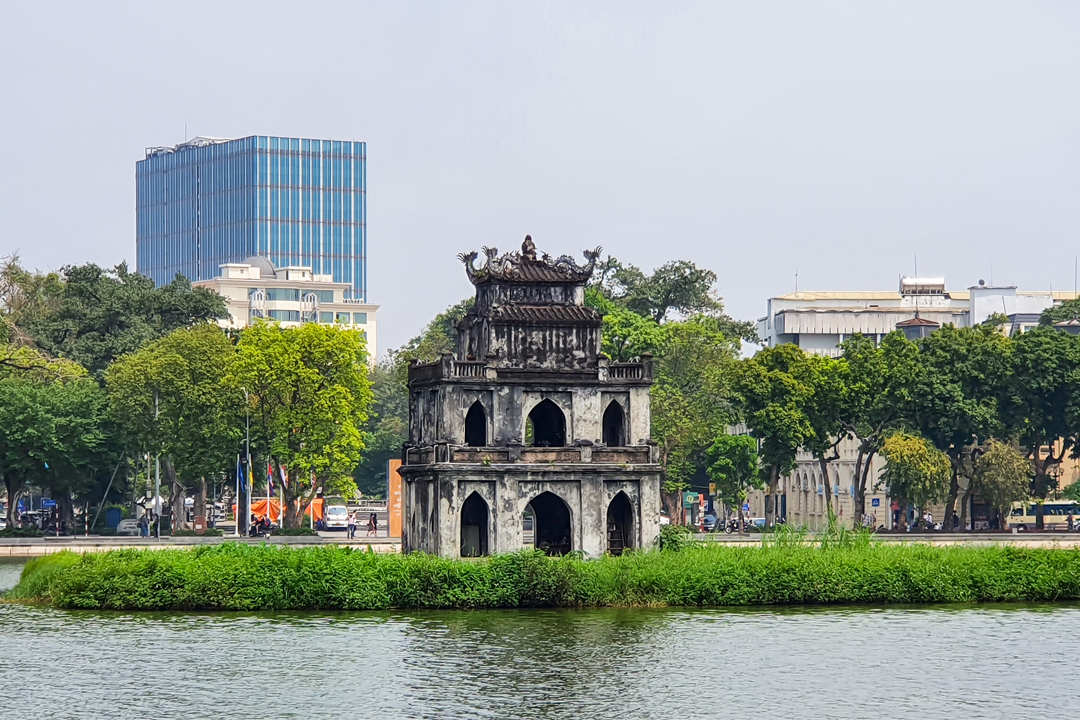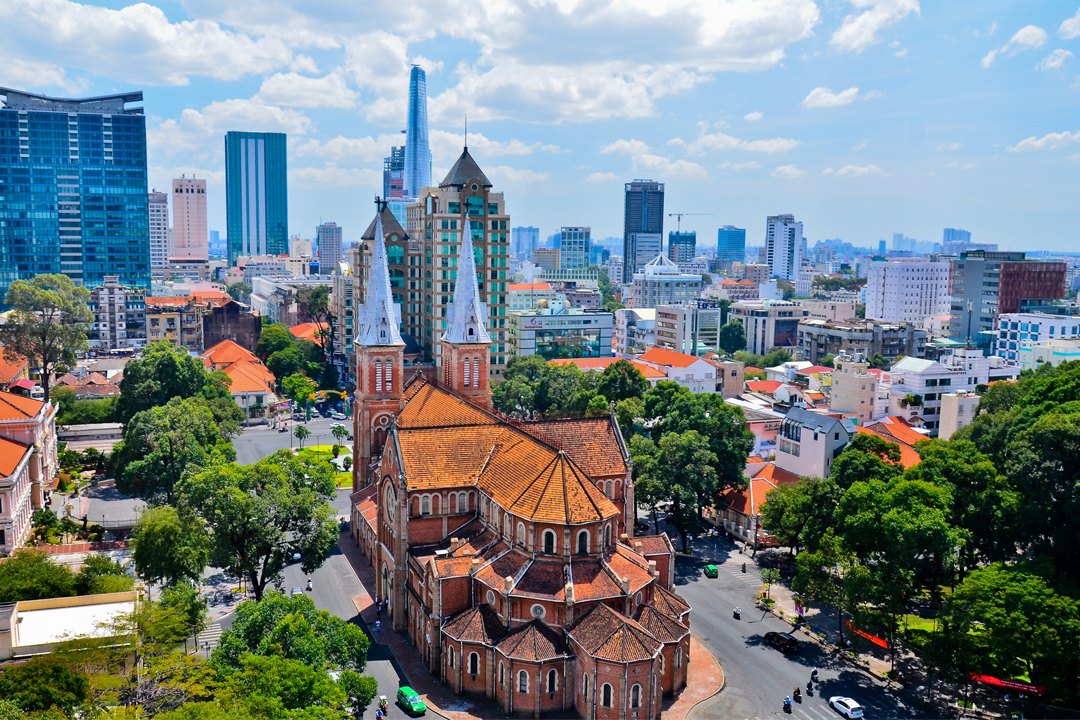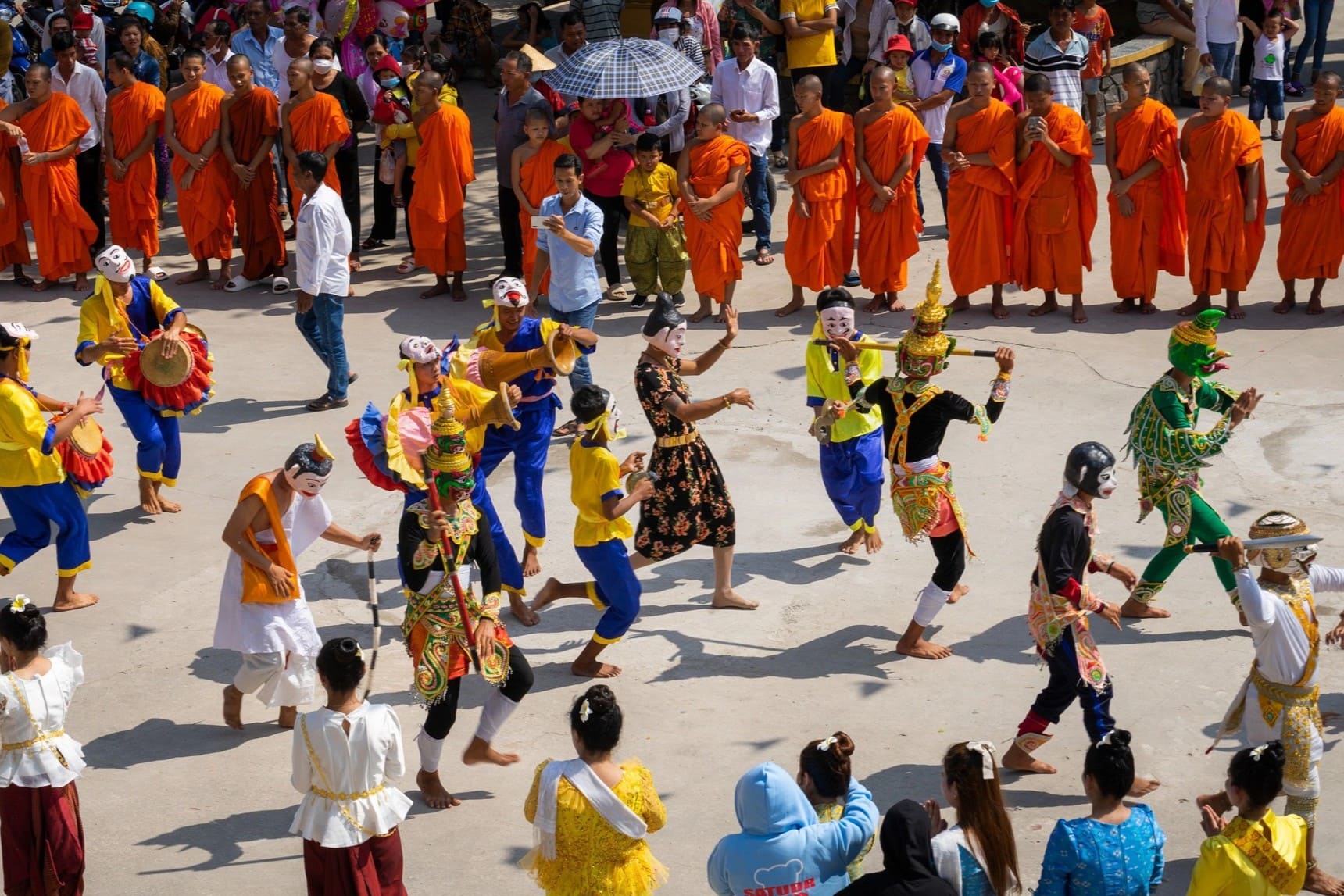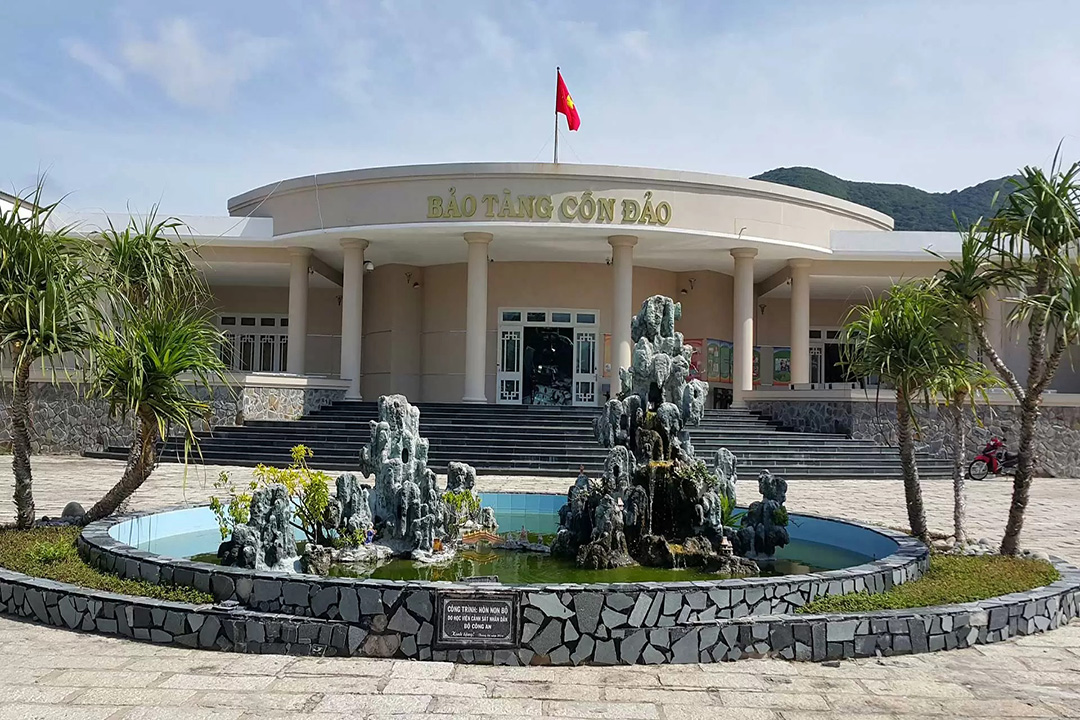Con Dao Museum: Overview, What to See & The Best Time to Visit
Stepping into the Con Dao Museum is like traveling back in time, discovering the layers of history that have shaped the island. The museum tells a detailed story of the history of Con Dao, from its early colonial days to its role in the Vietnam War. The museum is a testament to the resilience of Vietnamese political prisoners and the strategic importance of the island. Exhibits showcase Con Dao’s revolutionary past with war artifacts, prisoner testimonies, and preserved prison ruins.
This guide will walk you through everything you need to know about visiting the Con Dao Museum. Experience the museum’s rare artifacts and infamous Tiger Cages, once used to detain and torture political prisoners. Exhibits reveal the prison's brutal conditions and highlight Vietnamese revolutionaries' struggles, showcasing the island's significance.
For those planning a visit, we’ve put together a guide to the best times to visit the Con Dao Museum, ensuring you can experience it in the most favourable weather conditions. If you’re arriving by ferry or flight, our guides will provide travel tips for getting to Con Dao Island. You’ll also find detailed information on entrance fees and opening hours, making your trip hassle-free.
In addition to the museum, Con Dao has a wealth of nearby attractions. Pay your respects to fallen revolutionaries at Hang Duong Cemetery or explore the ruins of Con Dao Prison. Nature lovers can explore the lush landscapes of Con Dao National Park.
To help you make the most of your visit, we’ve also provided essential travel tips, including how to avoid crowds, the best times to explore the exhibits, and visitor etiquette. Finally, our FAQ section answers the most frequently asked questions about the museum. This article answers all of these in detail, so let's dive in.
Overview of Con Dao Museum
Located at 2 Nguyen Hue Street, Con Dao District, Ba Ria - Vung Tau Province, the Con Dao Museum offers an in-depth look into the island’s historical journey. Once a notorious penal colony, Con Dao has evolved into a site of immense historical and ecological significance. The museum captures this transformation, providing you with a comprehensive perspective on the island’s past.
Construction of the museum began on December 6, 2009, and was completed on October 10, 2010. Spanning a 2-hectare area near the French Tiger Cage relic, the museum boasts a total building space of 3,570 square meters, with 1,700 square meters dedicated to exhibits. It serves as a vital repository for Vietnam’s cultural and historical heritage, supporting the sustainable development of Con Dao District.
With its well-preserved artifacts and modern, well-organized displays, the museum attracts visitors from around the world. Through its exhibits, you can explore Con Dao’s colonial history, its role in Vietnam’s resistance wars, and its ongoing transformation.
The museum is open daily from 7:00 AM to 11:30 AM and 1:30 PM to 5:00 PM. Entrance costs 20,000 VND per person ($0.78). A combined ticket costs 50,000 VND per person ($1.98). It grants access to five key sites: Con Dao Museum, Con Dao Lord Palace Relics, Phu Hai Camp Relics, American Tiger Cage Relics, and French Tiger Cage Relics.
The exhibits cover significant historical themes, including the French colonial era, the Vietnam War, and the resilience of Vietnamese revolutionaries. Among the most compelling sections are relics from Con Dao Prison, where political prisoners endured extreme conditions. These displays offer a powerful insight into Vietnam’s struggle for independence.
Beyond the museum, several notable historical sites deepen visitors’ understanding of Con Dao’s past. The infamous Tiger Cage system, used for harsh confinement during both the French and American occupations, stands as a stark reminder of past atrocities. Nearby, Hang Duong Cemetery serves as a solemn tribute to national heroes and revolutionaries who gave their lives for Vietnam’s freedom.
A visit to the Con Dao Museum is more than just a history lesson it also highlights the island’s cultural and natural heritage. The museum plays a crucial role in linking Con Dao’s past with present conservation efforts, ensuring its stories of resilience and sacrifice are never forgotten.
Through its vivid imagery and artifacts, the museum sheds light on the brutalities inflicted by French colonialists, American imperialists, and their collaborators. You gain a profound appreciation for the hardships and heroism of the revolutionary prisoners who once suffered within these walls. For those eager to grasp the significance of Con Dao’s history, this museum is an essential stop.
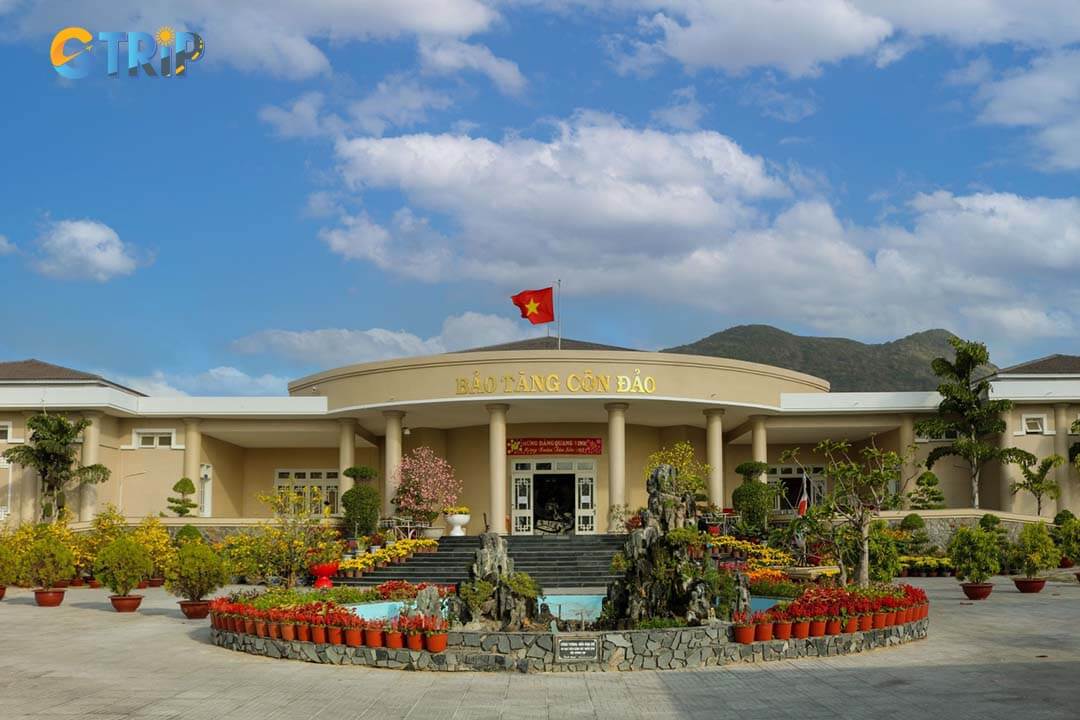
Con Dao Museum showcases the island’s colonial past, wartime struggles, and cultural heritage through immersive exhibits and historical relics
What to see in the Con Dao Museum?
Con Dao Museum provides an immersive journey through the island’s rich history, culture, and natural beauty. Through thematic exhibits, guided tours, and interactive displays, you can explore Con Dao’s transformation from a place of natural splendor to a site of revolutionary significance. The museum is divided into a ceremonial hall and four main themes, each offering a vivid perspective on different aspects of the island’s past and present.
1. Thematic exhibits
The museum offers a deep dive into Con Dao’s rich history, culture, and resilience through its thoughtfully curated exhibits. Each section highlights a different aspect of the island’s past and present, bringing its stories to life.
- Nature and people - This section showcases life in Con Dao through images and artifacts such as traditional baskets, shovels, and other everyday items. Additionally, models of turtles, rare fish, and snails illustrate the island’s diverse ecosystem, offering a glimpse into its ecological significance.
- Hell on earth - A powerful exhibit representing the brutal conditions endured by prisoners during the colonial and wartime periods. You can learn about the harsh and inhumane treatment suffered by political prisoners, including methods of torture such as blindfolding, handcuffing, and the use of restrictive masks.
- Frontline and school - This section highlights Con Dao’s role as both a resistance stronghold and a center for ideological education. Exhibits feature poems, newspapers, and embroidered works created by political prisoners, showcasing how they transformed suffering into a powerful spiritual and intellectual movement.
- Con Dao today - This section focuses on ongoing efforts to preserve Con Dao’s cultural and historical significance while developing sustainable tourism and conservation initiatives.
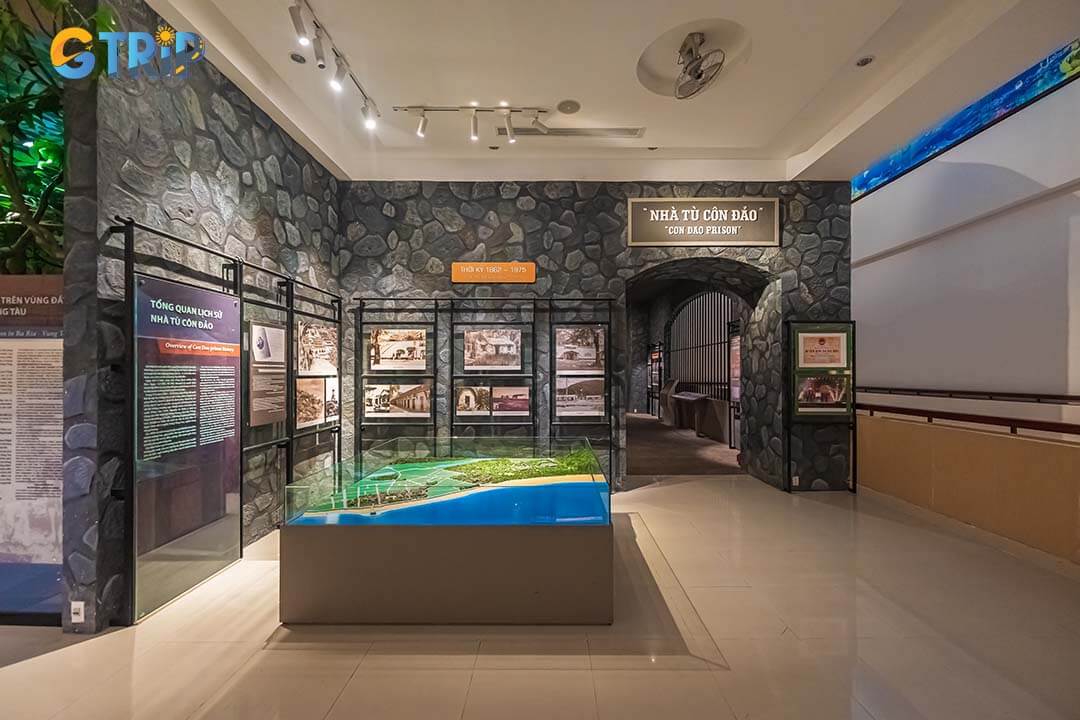
A journey through Con Dao’s daily life, resilience, history, and preservation efforts
2. Highlights of the museum
One of the museum’s most striking features is the 6-meter stainless steel sculpture in the ceremonial hall, symbolizing the unwavering spirit of Vietnamese revolutionaries. Depicting outstretched arms breaking free from chains, accompanied by a dove of peace, the sculpture embodies the relentless pursuit of freedom. Behind it, a stone wall composed of layered rock features prison identification numbers, representing generations of prisoners who suffered in Con Dao.
At Con Dao Museum, visitors can explore a miniature version of Con Dao National Park. It features nearly 2,000 artifacts and exhibitions showcasing the island’s natural, historical, and cultural evolution from prehistoric times to modern development. Additionally, the museum offers a harrowing look into the infamous Con Dao Prison, often referred to as “Hell on Earth”. Through portraits of patriotic scholars and vivid paintings of prisoners enduring oppression, visitors gain a deep understanding of the island’s painful legacy.
Each exhibit vividly portrays Con Dao’s 113-year history, contrasting oppression with revolutionary resilience. Visitors will also find historical records detailing the executions of many Communist soldiers, including national hero Vo Thi Sau, who remains an enduring symbol of courage and sacrifice.
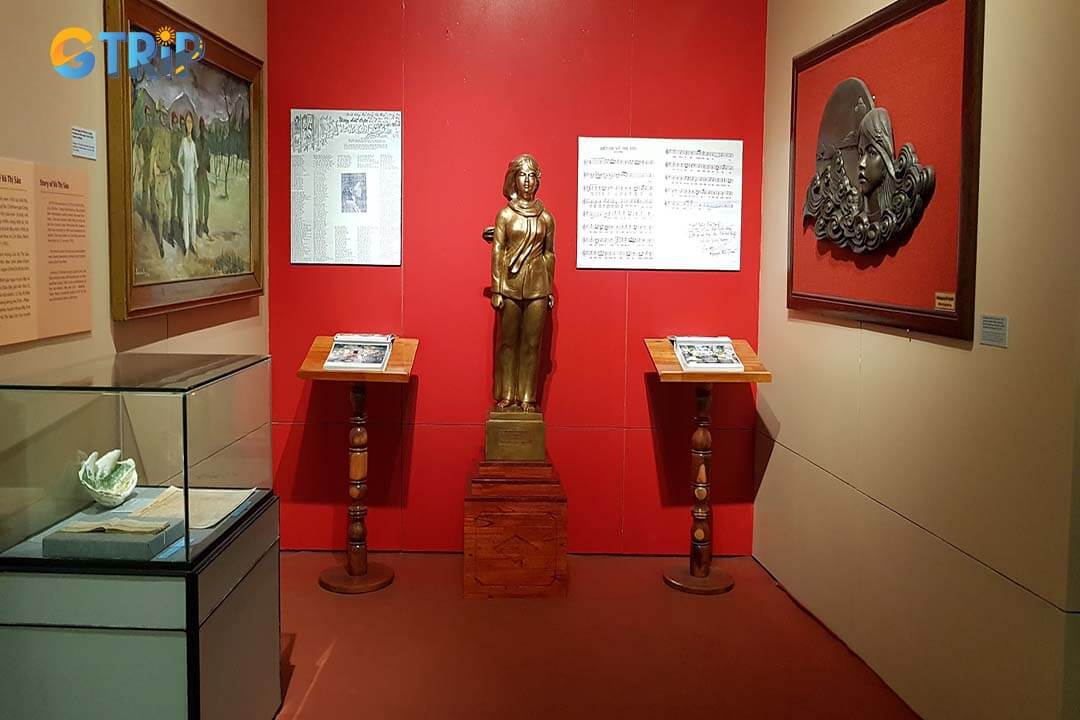
Honoring Vo Thi Sau’s bravery, sacrifice, and legacy in Vietnam’s fight for freedom
Outdoor exhibition area
Beyond the indoor exhibits, the museum features an outdoor display area, designed to showcase significant historical artifacts in an open space. Here, visitors can admire collections related to archaeological discoveries in Con Dao, such as the burial jars at Con Hai Den, the burial site at Con Mieu Ba, and excavation findings from the ancient village of Hon Cau.
Con Dao Museum offers an essential experience through its diverse exhibitions and powerful storytelling. It provides insight into the island’s historical depth, revolutionary spirit, and cultural legacy.
When is the best time to visit the Con Dao Museum?
The best time to visit Con Dao Museum is from November to April when the weather is dry, mild, and ideal for exploring historical sites. During these months, Con Dao Island enjoys pleasant temperatures, clear skies, and minimal rainfall, allowing visitors to comfortably explore the museum’s exhibits and other nearby attractions. The ideal travel season coincides with Vietnam’s dry period, ensuring that transportation to and from Con Dao Island is more reliable, with fewer disruptions due to rough seas or strong winds.
Visiting during this time offers a seamless travel experience, as ferry rides from Vung Tau and flights from major cities like Ho Chi Minh City and Hanoi operate with greater consistency. This period is also optimal for combining a trip to the museum with other historical and natural landmarks, such as Dam Tre Bay, a secluded area known for its diverse marine life and wartime history, or Dat Doc Beach, where visitors can relax after immersing themselves in Con Dao’s past.
From May to October, the region experiences monsoon rains, high humidity, and occasional storms, which can make sightseeing less convenient. While the museum remains open year-round, heavy rains may limit outdoor exploration, and boat services to Con Dao can be affected. However, some travelers prefer this time for its fewer crowds and lower accommodation prices, making it a viable option for those looking for a quieter experience. To maximize the experience, it’s recommended to visit early in the morning or late in the afternoon to avoid the midday heat.
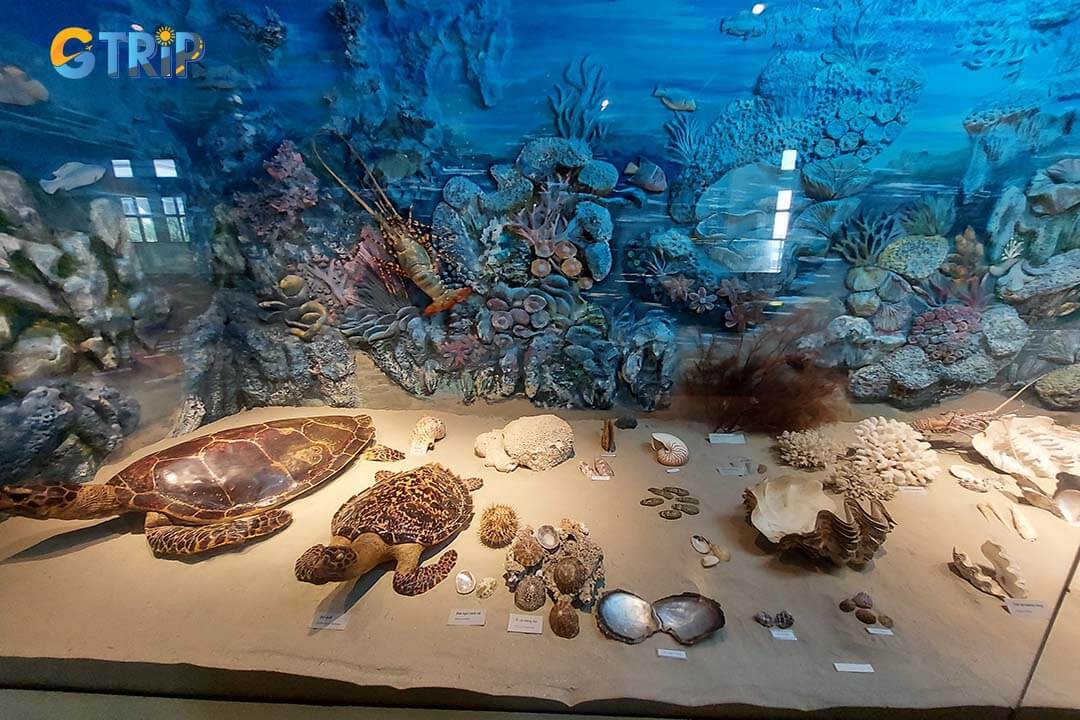
The best time to visit Con Dao Museum is from November to April mild weather ensures a comfortable and uninterrupted exploration of the island’s historical sites
How to get to the Con Dao Museum?
Reaching Con Dao Island is the first step to visiting Con Dao Museum, and travelers have two main transportation options: flights and ferries.
1. By flight
The fastest and most convenient way to reach Con Dao Museum is by taking a direct flight to Con Dao Airport (Co Ong Airport). Flights to Con Dao are available from Ho Chi Minh City (Tan Son Nhat International Airport) and Hanoi (Noi Bai International Airport). These flights are operated by Vietnam Airlines and Bamboo Airways, with an average duration of 50 minutes from Ho Chi Minh City and 2 hours from Hanoi.
Upon arrival, visitors can hire a taxi or rent a motorbike to reach Con Dao Museum, which is just 12 km from Co Ong Airport. The scenic ride offers a glimpse of Con Dao’s rugged coastline and nearby attractions like Dam Trau Beach, known for its golden sands and proximity to the airport.
2. By ferry
For those who prefer a budget-friendly and scenic route, ferries to Con Dao operate from Vung Tau and Soc Trang. The ferry journey from Vung Tau takes around 3.5 - 4 hours, while the one from Soc Trang is shorter, at 2 - 2.5 hours.
Ferries dock at Ben Dam Port, which is 12.4 km from the Con Dao Museum. From the port, visitors can take a shared minivan, motorbike taxi, or rent a vehicle to explore the island.
Important tips for visiting the Con Dao Museum
To make the most of your visit to the Con Dao Museum, a little planning goes a long way. Arriving early ensures a quieter experience while setting aside enough time allows you to fully explore its exhibits. Including practical tips on attire and photography as well as recommendations for nearby historical sites, these guidelines will help you have a smooth and insightful visit.
- Arrive early in the morning to avoid crowds and experience a quieter, more immersive visit.
- Plan for at least 1-2 hours to explore all exhibits, including wartime artifacts and historical records.
- Wear comfortable clothing and shoes, as you may need to walk around different sections of the museum.
- Respect the exhibits, especially those depicting the struggles of Vietnamese revolutionaries, by avoiding loud conversations and touching displays.
- Photography may be restricted in certain areas, so check with museum staff before taking pictures.
- Pair your visit with nearby historical sites, such as Phu Hai Prison and Tiger Cage, for a deeper understanding of Con Dao’s history.
- Check the weather forecast before visiting, as heavy rain may affect your overall experience.
- Bring a water bottle, especially during the hotter months, since the island’s humidity can make walking around exhausting.

Plan for a smooth visit to the Con Dao Museum with tips on timing, attire, and nearby historical sites
Nearby attractions around the Con Dao Museum
Explore attractions near Con Dao Museum, from historic prisons to serene temples and pristine beaches. If you're a history enthusiast or a nature lover, these sites provide a well-rounded experience of Con Dao’s rich heritage and natural beauty.
Con Dao Prison (140m)
One of the most significant Con Dao Island attractions, Con Dao Prison offers a harrowing yet essential look into Vietnam’s past. This prison complex, infamous for its brutal treatment of political prisoners, played a crucial role during both the French colonial era and the Vietnam War. Built in 1862 by the French, it was initially designed to suppress resistance movements. Later, during the American war, it became notorious for the infamous “Tiger Cages,” where prisoners were subjected to extreme torture.
Today, visitors can walk through the preserved prison blocks and witness the harsh conditions inmates endured. The museum within the prison showcases historical artifacts, including personal belongings of prisoners, letters, and chains, painting a vivid picture of their suffering and resilience. Guided tours provide deeper insights into the stories of prominent revolutionaries who were imprisoned here, making it an educational and emotional experience for those interested in Vietnam’s struggle for independence.
Phu Hai Prison (600m)
Within the historical sites in Con Dao, Phu Hai Prison stands out as the oldest and most notorious detention center. Built during the French colonial period, it housed thousands of political prisoners under appalling conditions. Phu Hai Prison, unlike others on the island, preserves its original structure, offering a stark look into the brutal penal system. The architecture reflects its grim purpose, with thick stone walls, iron-barred windows, and cramped cells that once confined prisoners in inhumane conditions.
The prison also features a large communal cell where hundreds of inmates were packed together, deprived of proper food, water, and medical care. In the courtyard, lifelike statues depict prisoners being tortured by guards, adding to the haunting realism of the site. For history enthusiasts, Phu Hai Prison provides an unfiltered look into the suffering endured by those who fought for Vietnam’s freedom. Visiting this site alongside Con Dao Prison allows for a more comprehensive understanding of the island’s tragic yet heroic past.
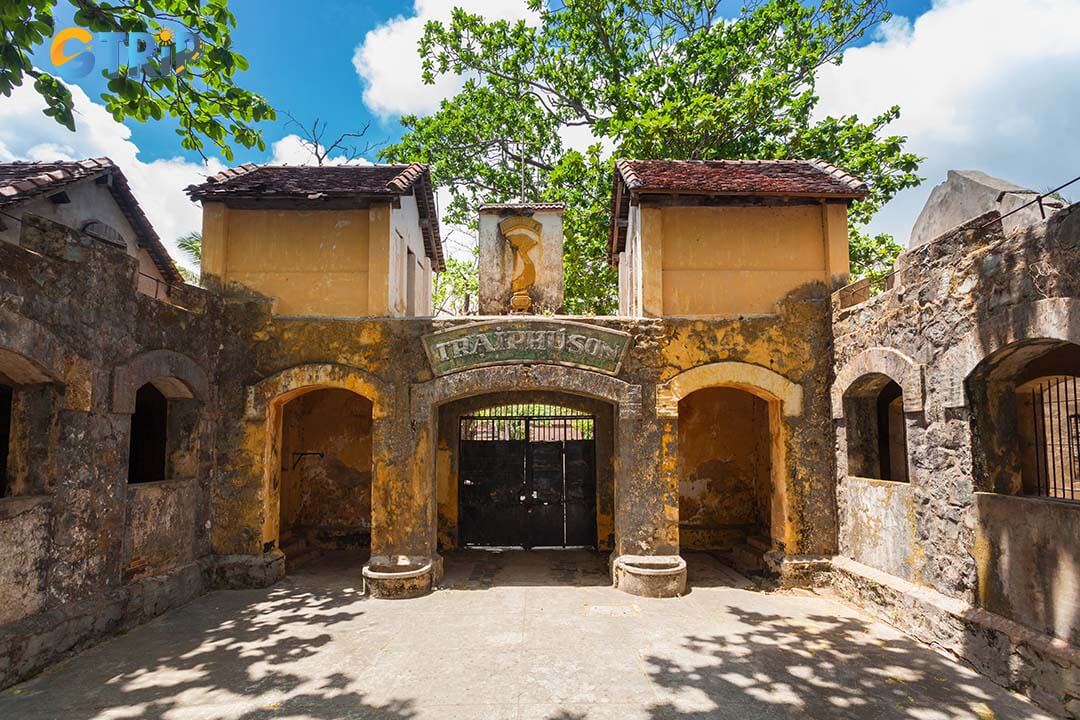
Phu Hai Prison, the oldest on Con Dao Island, offers a haunting glimpse into the brutal conditions endured by political prisoners during the French colonial era
Van Son Pagoda (2.7km)
For those seeking a moment of tranquility, Van Son Pagoda offers a stark contrast to the somber history of Con Dao. Situated on a hilltop surrounded by lush greenery, this Buddhist temple provides a peaceful retreat with breathtaking views of the island. Unlike the prison sites, which evoke sadness and reflection, Van Son Pagoda invites visitors to find solace in its serene surroundings. The temple blends traditional Vietnamese and modern Buddhist design, with carved statues, ornate altars, and large incense burners for prayers.
One of the highlights of visiting Van Son Pagoda is the journey to reach it. The winding path leading to the temple takes visitors through a scenic landscape, with panoramic views of the coastline and dense forests below. Monks often chant prayers in the background, creating a meditative atmosphere that encourages relaxation and mindfulness. Many locals and tourists visit the pagoda not only for spiritual reasons but also to appreciate the stunning natural beauty of Con Dao from its elevated vantage point. If you are a history buff or a nature lover, Van Son Pagoda is a must-visit site that offers a deeper connection to the island’s cultural and spiritual heritage.
Dam Trau Beach (13.6km)
Not all nearby attractions are historical Dam Trau Beach, with golden sands and turquoise waters, offering a relaxing escape. Located near Con Dao Airport, this beach is a paradise for those who appreciate nature’s untouched beauty. The soft, powdery sand and swaying palm trees create a picturesque setting that feels like a hidden tropical escape. Unlike many crowded beaches in Vietnam, Dam Trau Beach remains relatively quiet, allowing visitors to enjoy a peaceful and uncrowded experience.
This beach is not just about relaxation it also offers exciting activities such as swimming, snorkelling, and exploring nearby coral reefs. Many visitors love watching planes land at Con Dao Airport from the shore, as they fly extremely low over the beach, creating an exhilarating sight. Local seafood restaurants nearby serve fresh catches of the day, including grilled squid, shrimp, and fish, making it an excellent spot to savor the flavors of the region. If you’re looking for a quiet retreat or an adventure in the clear blue waters, Dam Trau Beach is a must-visit destination that showcases the natural charm of Con Dao.

Dam Trau Beach, with its golden sands and clear waters, offers a peaceful retreat and exciting activities like snorkeling and plane spotting near Con Dao Airport
FAQs about the Con Dao Museum
The Con Dao Museum is a significant historical site that provides visitors with deep insights into Vietnam’s past. Covering multilingual exhibit information and accessibility features, the museum ensures an informative and inclusive experience for all.
1. Does the Con Dao Museum offer information in multiple languages?
The museum provides English, French, and Vietnamese translations for most exhibits, making them accessible to international travelers. Guided tours are also available in different languages, ensuring visitors receive in-depth explanations of the displays and their significance.
2. Is the Con Dao Museum suitable for children?
Some exhibits, especially those on French colonial prisons and Tiger Cages, may be disturbing for young children. Parents should use discretion when visiting with kids and opt for a guided tour that presents the information in a more educational and age-appropriate manner.
3. Are there any accessibility options for visitors with disabilities?
Yes, Con Dao Museum is designed to be accessible to all visitors, with ramps, elevators, and wheelchair-friendly pathways. The museum staff is also available to assist those who need additional support during their visit.
4. Is the Con Dao Museum worth visiting?
For history enthusiasts and those interested in Vietnam’s struggle for independence, Con Dao Museum is a must-visit. The museum offers an immersive experience that connects visitors with the past, shedding light on the sacrifices made by Vietnamese revolutionaries. It’s a crucial stop for anyone looking to understand the true history of Con Dao Island.
Con Dao Museum offers a deep dive into the island’s colonial past, wartime struggles, and revolutionary legacy. With rare historical artifacts and infamous interactive exhibits, the museum guarantees an immersive learning experience for history buffs. The museum's curated collections highlight Vietnamese resilience and sacrifice, making it a must-visit for history enthusiasts. After your visit, explore Con Dao’s historical sites, stunning beaches, and cultural landmarks. GTrip - Vietnam Travel Agency is your trusted partner in discovering the best destinations in Vietnam.

